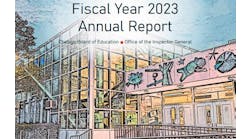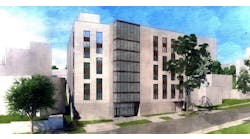Not too long ago, computers in education were an unaffordable pipe dream. In a short time, technology and Internet access for students have evolved from an expensive amenity to a ubiquitous learning tool. For today’s students, connection to the World Wide Web is an absolute necessity for communication.
As was pointed out in this year’s Mindset List, put out annually by Beloit College, the freshmen arriving on college campuses this fall, most of them born in 1993, have never known a world without the Internet. Even before they enter the world of higher education, they are likely to have an array of gadgets—laptop computers, tablet devices, mp3 players, gaming systems, e-readers, smartphones—that depend to one degree or another on connections to the World Wide Web.
So when these students begin classes at a university, they expect that whatever technology they need will be available to them wherever they need it, whether that’s a residence hall room, a classroom, a coffeehouse, a patch of grass on campus, or back home. Having to traipse across campus to a computer lab to complete an assignment is so 20th century.
Some schools and universities have embraced desktop virtualization to provide students with better, easier and safer access to the Internet and the technological applications and resources needed to survive academically and socially. Virtualization enables education institutions to consolidate their information technology infrastructure in a central location and provide needed applications and data to users on their own devices when they request it. Because the applications are provided by the institution to a user’s equipment, students will have the same computer experience whether they are signing on from a laptop, a smartphone or a desktop.
Without virtualization’s ability to deliver software from a centralized point, students who needed access to certain software would have to find a lab or classroom with computers that had that software, or they would have to buy the software for their own computer.
Having the ability to deliver previously limited software to students no matter where they are signing on enables schools to expand their capacity for distance learning.
Virtualization also can simplify information management for a large institution. A large school district or university may have thousands of computers dispersed throughout hundreds of locations. Each of those locations may have different models of computers and be loaded with different kinds of software. Maintaining machines, carrying out upgrades and troubleshooting the glitches that arise in an institution’s various decentralized systems can be costly and time-consuming.
Schools and universities that turn to virtualization often are able to rein in technology costs because they don’t have as many personal computers to maintain or replace. Giving students access to their virtual desktop from anywhere may enable some schools to reduce the number of computer labs on a campus.
"Virtualization allows a single server to run multiple applications safely and reliably," the 2010 National Education Technology Plan says, "so that districts can reduce the number of servers on their networks dramatically, cutting costs and making the networks less complex and easier to manage."
To carry out desktop virtualization effectively, education institutions need to make sure that their technology infrastructures have sufficient bandwidth to accommodate the timely delivery of data, especially specialized graphics-intensive education programs, to multiple users.
Kennedy, staff writer, can be reached at [email protected].
Related Stories
Related Video
Learn how Tyler (Texas) ISD uses desktop virtualization.


